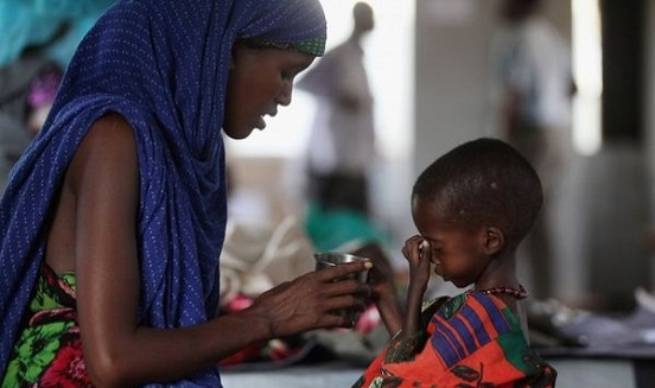A new UN report reveals data on a problem that remains frighteningly significant: in 2021, there was one child or teenager less on the planet every four and a half seconds.
The problem of child mortality is particularly acute in the countries of South Asia and Africa, although the situation is gradually, very slowly, starting to improve, writes BB.LV. In the latest report published by the United Nations Interagency Group on Child Mortality Estimation (UN IGME), says: about 5 million children did not live to see the age of five, and another 2.1 million died between the ages of 5 and 24 (data for 2021).
The report, also released yesterday, said there were 1.9 million stillbirths in 2021. Many of the deaths could have been prevented if there was access to quality medical care. Vidhya Ganesh, UNICEF Director of Data Analysis, Planning and Monitoring, says:
“Too many parents every day face the trauma of losing their children, sometimes even before their first breath. Such a massive preventable tragedy should never be seen as inevitable. Progress is possible with stronger political will and targeted investment in equitable access to primary health health care for every woman and child.
In fairness, it should be noted that the report also contains positive information: since 2000, the world has recorded a lower risk of death in all age groups. In the case of children under five, for example, this figure fell by 50%. In the older age group, it decreased by 36%, and stillbirths began to be recorded 35% less frequently. The reason is obvious: increased investment in strengthening primary health care systems for women, children and young people.
But since 2010, those gains have dwindled significantly, with 54 countries falling short of the Sustainable Development Goals’ target of reducing under-five deaths. Without urgent action to improve health care, nearly 59 million children and adolescents will die before 2030, and another 16 million babies will miss our world due to stillbirth. WHO Director of Maternal, Newborn, Child and Adolescent Health Anshu Banerjee says:
“It is highly unfair that a child’s chance of survival can only depend on where they are born, and that there is such a huge disparity in their access to life-saving health services. Children around the world need reliable primary health care systems that meet the needs them and their families, so that wherever they are born, they have a better start and hope for the future.”
Reports from the United Nations show that chances of survival are still highly dependent on where a child is born. While sub-Saharan Africa accounted for just 29% of the world’s newborns, the region accounts for 56% of all deaths of children under the age of five in 2021. In South Asia, this figure is 26%. And children born in sub-Saharan Africa have the highest risk of death in the world – 15 times higher than for children in Europe and North America.
Stillbirth statistics are also catastrophic. In 2021, 77% of the world statistics of such cases were recorded here, while almost half of them are in the countries of Black Africa. Compared to Europe and North America, the risk of stillbirth in this region is seven times higher. Juan Pablo Uribe, World Bank Global Director for Health, Nutrition and Population and Director of the Global Financing Facility said:
“Behind these numbers are millions of children and families who are being denied their basic rights to health. We need political will and leadership to finance sustainable primary health care, which is one of the best investments that countries and development partners can make” .
Experts note that most child deaths occur in the first five years of life, half of them in the first month of life. The main causes are preterm birth and complications. More than 40% of stillbirths are also associated with this. However, most cases can be prevented, it is only necessary to ensure that women have access to quality care throughout pregnancy and childbirth. For children who survive the first 28 days of life, infections such as diarrhea, pneumonia and malaria pose the greatest threat.
COVID-19 has not directly increased child mortality, as infants are less likely to die from it than adults. However, the pandemic has affected future risks to their survival. The reports highlight concerns about disruptions in vaccination campaigns, nutrition services, access to primary health care. All this can jeopardize the health and well-being of children for many years to come. In addition, the pandemic has led to the largest decline in vaccination in the last three decades. As a result, the most vulnerable newborns and children are at greater risk of dying from preventable diseases.
Reports also point to data gaps that can seriously undermine the impact of programs designed to improve survival and well-being. Director of the Population Division of the UN Department of Economic and Social Affairs John Wilmot notes:
“The new estimates highlight significant global progress since 2000 in reducing under-5 mortality. Despite this progress, more work is needed to address the remaining large disparities in survival rates across countries and regions, especially in sub-Saharan Africa. Only By improving access to quality health care, especially during childbirth, we can reduce these inequalities and end preventable deaths of newborns and children worldwide.”
Reference. Black Africa, or Tropical Africa, or Africa south of the Sahara – the name of the part of the African continent, located south of the Sahara desert. This part of Africa is inhabited mainly by Negroid peoples, which served as the basis for the name.







More Stories
ELSTAT: inflation increased by another 3.2% in March
“Disappointing” second poorest EU country
Greece ranks last in the EU in terms of investment as a percentage of GDP in 2023